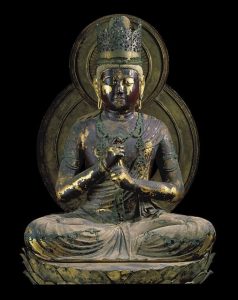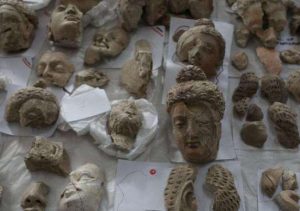If you were a traveler interested in the history of Vajrayana Buddhism, where would you go? Tibet probably comes to mind, and while it’s an understandable choice, there is no evidence that Vajrayana began in the place most responsible for popularizing it. Besides, the country is a difficult one to get to just now.
The Swat valley of Pakistanis central to any version of Buddhist history, being home to one of the world’s earliest seats of higher learning at Taxila, as well as a center for early Buddhist art. Some academics believe the area may have been the place where the Vajrayana first emerged, but only hardy travelers venture here these days.
A safer and easier option is at hand, and one that may turn out to be – if not the birthplace of Vajrayana – at the very least one of the most important centers of Buddhist Tantra currently known. It’s relatively easy to get to, inexpensive, offers beautiful views of the east Indian countryside, and so far is free from throngs of tourists.
What’s more, it’s not only known for its connection to Vajrayana.
The state of Odisha has changed names several times during its long history and is best known to students of Buddhism as Kalinga, the last political entity to hold out against the empire building campaign of the Mauryan emperor Asoka. As objects of emperor’s pride and anger, the suffering of the Kalingans was said to have been so great, and the king struck by the knowledge that his war against them had brought about so much carnage, that he thereafter led a life dedicated to the practice of ethics and has since been revered as a paragon of Buddhist royalty.
Just outside the state capital of Bhubaneswar, you’ll find a three-meter hill of rock fronted by a shallow lawn, shaded by trees and lined with flowers. Less than two dozen steps from the road, a glass case covered by steel shutters encloses the rock face on which may be found the message of Asoka to his new Kalingan subjects. The emperor wishes that all live peacefully and is concerned local rulers be fair and just. Carved from the peak of the rock, the front half of an elephant caps the emperor’s message of goodwill.
For many years this was the only marker of the great war, until the survivor of an equally devastating conflict saw the need for something more monumental. Nichidatsu Fujii was a Nichiren priest who travelled to India in the 1930’s to fulfill a prophecy that the Lotus Sutra would one day be taught again in India. During his stay Fujii met Gandhi and learned firsthand about nonviolent protest. He took those lessons and ideas back home to war-time Japan and for his efforts was thrown in prison. Following the horrors of Hiroshima and Nagasaki, and his release from confinement, Fujii began a campaign to build pagodas, the East Asian version of the Indian stupa, in order to promote world peace. And what better place to put a monument to peace than Kalinga, the anvil on which Buddhism’s first royal empire was forged?
Just a short drive up a steeper hill neighboring the rock edict is a small parking lot tightly packed with cars and tour busses. The Peace Pagoda of Dhaulagiri, or Dhauli Hill, is a featured stop on the Odisha tourist circuit, which includes many of India’s best known examples of medieval Hindu temples (built during the same period as many of its famous Buddhist temples). You may not find many Buddhists here, but the pagoda is regularly thronged with Indian tourists, who come to offer puja, circle the pagoda, have a photo taken, and perhaps buy a few snacks or trinkets from the vendors lining the parking lot and steps to the pagoda. A team of young men make a living, or least some spending money, selling instant photo prints made on HP printers powered by battery packs.
None of this has anything to do with Vajrayana and if this were all there were it wouldn’t be much worth the visit to anyone interested in Buddhism, let alone Buddhist Tantra. Peace Pagodas of nearly identical design can be found in other Buddhist pilgrimage spots such as Lumbini and Rajgir. The rock edict and the pagoda do, however, establish the area’s Buddhist credentials.
Other entries in this series:
Puspagiri: The Buddhist Triangle
Puspagiri: Echoes of the Tantric Past
Photo albums (external link):
Dhauligiri
Lalitgiri
Udayagiri
Langudi
Sixty-Four Yogini Temple
Odisha State Museum
















